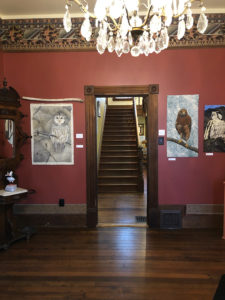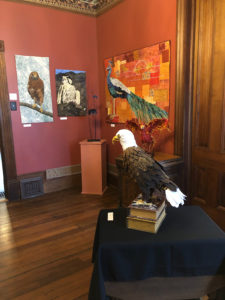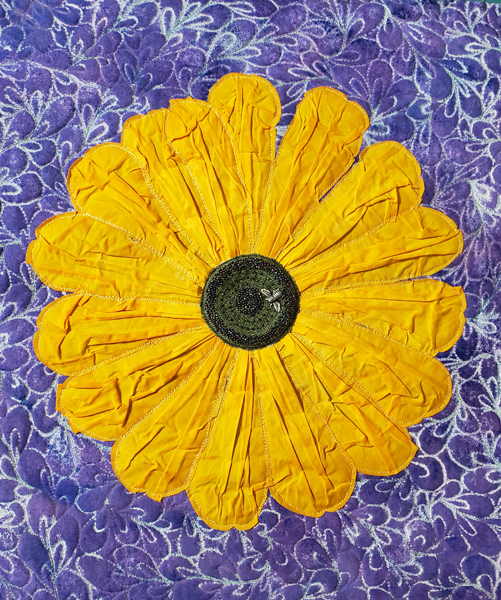I’m in a transition state this week. Last month, I completed a couple of projects and now it is time to move forward with creating some new artwork. I started flipping through photos and found this tree quilt, “Solitude,” which I made in 2011. It is one of the first art quilts I ever made. I really like how I completed the background. It is a quilted whole-cloth design with an appliqued tree. After quilting, the fabric was painted with gesso, then layers of paint colors were applied with paint rollers.
 I’m looking at how I handled the background and I’m still fascinated by the technique. I need to revisit this process. It was pretty intense to create. I used regular craft paint, so this quilt is stiff. I need to try it with fabric paint.
I’m looking at how I handled the background and I’m still fascinated by the technique. I need to revisit this process. It was pretty intense to create. I used regular craft paint, so this quilt is stiff. I need to try it with fabric paint.
My brain is flooded with all sorts of stories about it. I remember creating it, exhibiting it, selling it and now I’m inspired by it again.
There was a time I didn’t like looking back at the pieces I made. I don’t know about you, but sometimes I can be overly-critical about my art. That’s the perfectionist taking charge. A fun way to re-direct this thinking is to image the thoughts are coming from a mischievous little pixie who whisper in your ears. You could believe them or you can just ignore what they have to say. This is part of the journey. To overcome negative self-talk, we first need to recognize it is there then decide to ignore it.
I’ve come a long way since I made this quilt. I realize now that they all can’t be master pieces. Each is made by my hands and nothing hand-made can be perfect in every way.  So it is important to let go and accept where you are. As humans we are forever metamorphosing, so we can value each step along the way as a learning process. It is all part of moving to the next higher plane.
So it is important to let go and accept where you are. As humans we are forever metamorphosing, so we can value each step along the way as a learning process. It is all part of moving to the next higher plane.

















